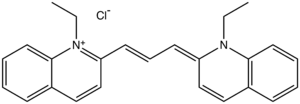Frances Mary Hamer facts for kids
Quick facts for kids
Frances Mary Hamer
|
|
|---|---|
| Born | 14 October 1894 |
| Died | 29 April 1980 Hastings, England
|
| Nationality | British |
| Alma mater | Girton College, Cambridge University of London |
| Occupation | Chemist |
| Known for | The Cyanine Dyes and Related Compounds (1964) |
| Parents |
|
Frances Mary Hamer (born 1894, died 1980) was a brilliant British chemist. She was an expert in special chemicals that made photographs better. These chemicals are called "sensitizing compounds." She even held many patents for her discoveries. During World War I, Frances helped the Allied forces a lot. Her work made aerial photography (taking pictures from planes) much clearer and more useful.
Contents
Early Life and Education
Frances Hamer was born on October 14, 1894, in Kentish Town, London. Her parents were Sir William Heaton Hamer and Agnes Conan. Her father was a doctor who worked for the city of London.
School Days
Frances went to the North London Collegiate School. This was the same school her mother and aunts had attended. She was even named after the school's founder, Frances Mary Buss. Frances finished school in 1916. That same year, she started studying chemistry at Girton College, Cambridge.
At that time, women were not allowed to get a full degree from Cambridge University. But Frances didn't stop there! She continued her studies and earned her doctorate in chemistry in 1924 from the University of London.
A Chemist During Wartime
Even while she was still a student during World War I, Frances Hamer joined an important research group. This group was led by Sir William Pope. Their mission was to find a reliable way to make a special chemical. This chemical was called a "photographic sensitizer."
Why was this so important? The Germans had a chemical called pinacyanol. It made their photos taken from planes much clearer. This was a big advantage for them in the war. Pinacyanol made photographic plates more sensitive to red light. This meant German planes could take detailed pictures of Allied battlefronts, especially at dawn.
Frances and her team worked hard with another chemist, William Hobson Mills. They figured out what pinacyanol was made of and how to create it themselves. Thanks to Frances, almost all the pinacyanol used by the British came from their lab. This greatly improved the pictures taken by British pilots. It was a huge help to the British war effort!
Working in Private Industry
After the war, Frances Hamer worked for six years at a company called Ilford Photo Ltd. Then, in 1934, she joined Kodak in England. The person who hired her at Kodak said she was a "first-class organic chemist." She was known for her amazing work on sensitizing dyes.
Frances became the Head of the Organic Chemistry Research Department at Kodak. During her time at Ilford and Kodak, she wrote more than 70 research papers. She also filed many patents for her inventions. She even discovered new types of photographic sensitizers!
While at Ilford, she met another chemist named Nellie Ivy Fisher. Nellie later became the first woman to lead a division at Kodak-Australia. When Frances moved to Kodak, Nellie followed her. Together, they wrote seven papers and got several patents.
Professional Achievements
Frances Hamer was very active in many important science groups. She was part of the Chemical Society and the Royal Society of Chemistry. She also made history by being the first woman elected to the Royal Photographic Society (RPS).
Even with all her achievements, she was a bit sad she was never elected a Fellow of the Royal Society. This was a very old and respected science group. But, as one author explained, it was harder for women to get into such groups back then. Also, her work was more about practical uses (applied research) than pure academic science.
In 1945, Frances went back to her academic roots. She became an honorary lecturer at Imperial College. But she still kept working as a research chemist and consultant at Kodak.
After Retirement
Frances Hamer fully retired in 1959. She immediately started writing a very important book about cyanine dyes. This book, called The Cyanine Dyes and Related Compounds, was published in 1964.
Later in life, she had a couple of serious accidents. These made it hard for her to walk without a cane. But she still loved gardening! Frances Hamer passed away on April 29, 1980, in Hastings, at the age of 85.
Selected Awards
Frances Hamer received several important awards for her work:
- Gamble Prize (1921)
- Yarrow Scientific Research Fellowship (1921)
- Henderson Award (1948)
- Royal Photographic Society Progress Medal (1963)
- Honorary Fellowship to the Royal Photographic Society (1963)
- Fellowship, British Chemical Society
Selected Patents
Frances Hamer was credited with about 32 patents. These patents covered her inventions related to dyes and chemical compounds used in photography.


